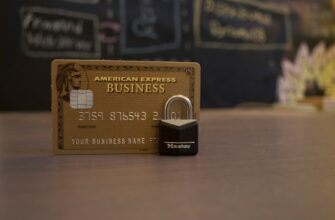- Your Digital Life Held Hostage? How to Recover Hacked Accounts Fast
- Red Flags: Signs Your Account Has Been Compromised
- Critical First Response: 5 Immediate Actions
- Account Recovery Protocol: Step-by-Step Best Practices
- Post-Recovery Security Lockdown
- Proactive Protection: Prevent Future Account Takeovers
- Account Recovery FAQ: Expert Answers
- Q: How long does account recovery usually take?
- Q: Can I recover accounts if the hacker changed my email/phone?
- Q: Should I pay ransomware demands to regain access?
- Q: How often should I check for unauthorized access?
- Q: Are biometrics safer than passwords?
Your Digital Life Held Hostage? How to Recover Hacked Accounts Fast
Discovering your account has been hacked triggers instant panic. Whether it’s your email, social media, or banking login, unauthorized access means your privacy, finances, and identity are at risk. Every 39 seconds, a cyberattack occurs somewhere online—and personal accounts are prime targets. This guide delivers actionable best practices to recover your account from hackers efficiently while minimizing damage. We’ll walk through immediate response tactics, proven recovery protocols, and critical security upgrades to reclaim your digital safety.
Red Flags: Signs Your Account Has Been Compromised
Early detection limits hacker damage. Watch for these warning signals:
- Unfamiliar login locations or devices in account activity logs
- Password reset emails you didn’t request
- Friends reporting strange messages from your profile
- Unauthorized transactions or changed account details
- Sudden loss of access to your own accounts
If you spot even one indicator, assume breach and act immediately—delaying increases vulnerability to identity theft and financial fraud.
Critical First Response: 5 Immediate Actions
- Disconnect Devices: Log out of all sessions via account settings to boot hackers instantly.
- Scan for Malware: Run antivirus software on all devices to eliminate keyloggers.
- Alert Financial Institutions: Freeze cards and report fraud if banking/payment details were accessible.
- Change Passwords: Update credentials for compromised accounts AND linked services (start with email).
- Enable Multi-Factor Authentication (MFA): Add this extra security layer before hackers lock YOU out.
Account Recovery Protocol: Step-by-Step Best Practices
Follow this battle-tested process to regain control systematically:
- Use official recovery channels (never third-party sites)
- Verify identity via backup email/phone number
- Answer security questions cautiously—hackers may have altered them
- Submit ID verification if required (e.g., driver’s license photo)
- Check connected apps/services and revoke suspicious permissions
Platforms like Google and Facebook offer dedicated hijack reporting tools—use them. Document every step with timestamps in case legal action is needed.
Post-Recovery Security Lockdown
After regaining access, fortify defenses:
- Password Overhaul: Create 12+ character phrases mixing letters, numbers, and symbols. Never reuse passwords.
- MFA Everywhere: Prioritize authenticator apps over SMS for two-factor authentication.
- Review Recovery Options: Update backup emails/phones and remove old devices.
- Audit Account Activity: Delete unrecognized logins and check for hidden forwarding rules.
Proactive Protection: Prevent Future Account Takeovers
Turn recovery into resilience with these habits:
- Use a password manager to generate/store unique credentials
- Monitor dark web exposure with services like HaveIBeenPwned
- Never click suspicious links—verify sender addresses carefully
- Update software regularly to patch security vulnerabilities
- Back up critical data offline to mitigate ransomware impact
Account Recovery FAQ: Expert Answers
Q: How long does account recovery usually take?
A: Most platforms resolve cases within 24-72 hours if verification details are accurate. Complex cases may take a week.
Q: Can I recover accounts if the hacker changed my email/phone?
A: Yes. Use “forgot account” features or submit ID verification to prove ownership. Contact support directly if locked out.
Q: Should I pay ransomware demands to regain access?
A: Never. Payment funds criminal activity and doesn’t guarantee recovery. Report to authorities like IC3.gov immediately.
Q: How often should I check for unauthorized access?
A: Review login activity monthly. Set up alerts for new devices/logins if available.
Q: Are biometrics safer than passwords?
A> They add security but use them WITH passwords and MFA for maximum protection. Biometrics alone can be bypassed.
Recovering from a hack is stressful, but these best practices significantly reduce damage. Remember: Quick action, methodical recovery steps, and upgraded security turn victims into vigilant defenders of their digital lives.








